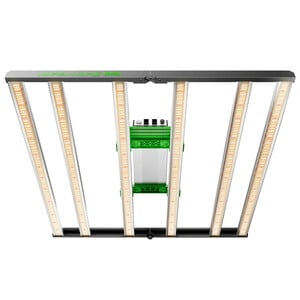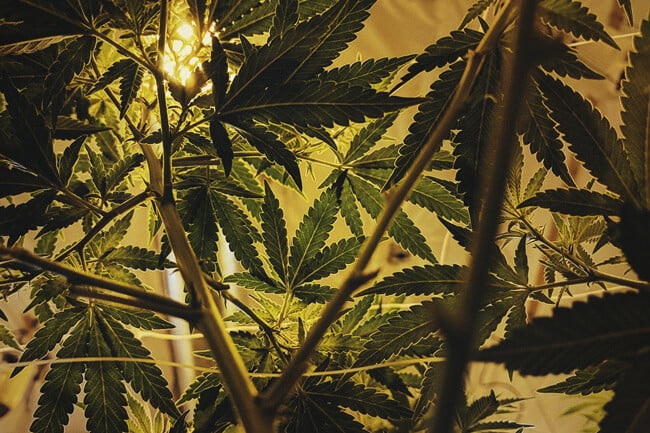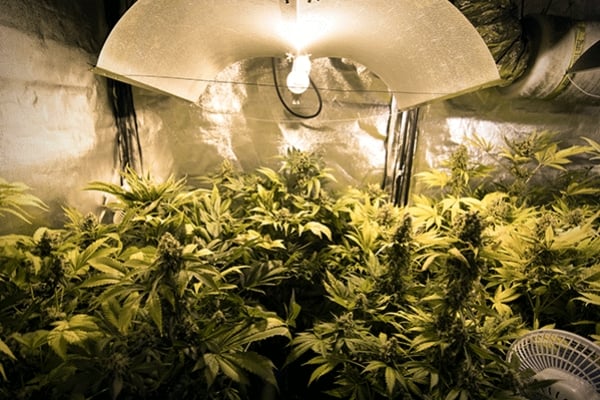.
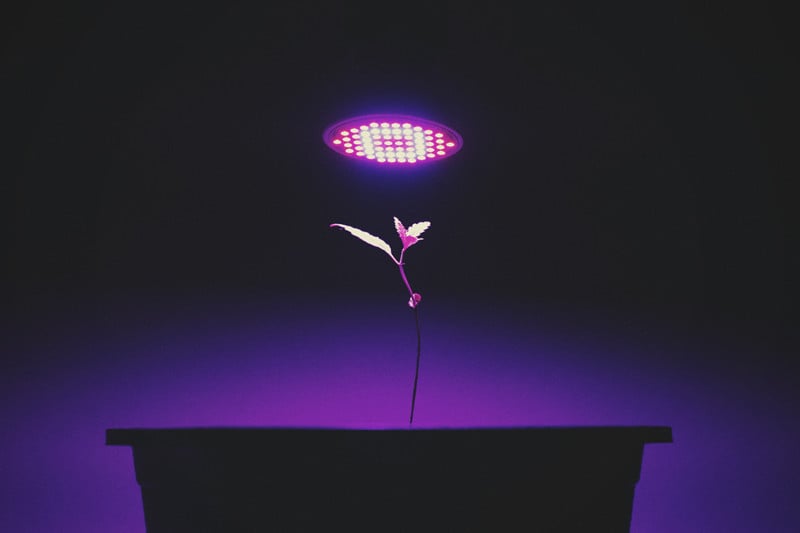
Using LED Grow Lights For Cannabis: 6 Mistakes to Avoid
Whether you are new to growing cannabis or just new to growing with LEDs, mistakes can happen! Find out what you should avoid in order to grow top-tier cannabis under LED lights!
Growing great cannabis is not really difficult—at least in theory. Get yourself some quality cannabis seeds, good soil, proper containers, and you’re already off to a good start. However, if there’s one factor that’s especially crucial to developing superb cannabis, it’s light—a lot of it. Indeed, cannabis plants require more light than most other plants, and they optimise performance if light exposure is significant and consistent. As such, you really don’t want to skimp when it comes to your grow lights.
In the past, weed cultivators largely used HID lights—with MH (metal halide) lights used for vegging and HPS (high pressure sodium) lights employed for flowering. HID lights are still viable, and they have a great track record amongst home and commercial growers alike. That said, LEDs are exponentially taking over grow rooms around the world. Why? Compared to HID, LEDs have some convincing advantages: They use (a lot) less electricity, allowing you to save money over time and reduce the footprint you leave on the environment. They also emit less heat, which can be a big advantage, especially in small grow setups. Lastly, LEDs have recently become more affordable as the tech has become widespread, allowing home growers an opportunity to benefit from this unique and powerful lighting system.
Yet, even the fanciest LED lights cannot prevent growers from making mistakes in their grow. Let’s delve into some common errors, slips, and faux pas to avoid when growing cannabis with LEDs.
Contents:
1. Not Setting Your LED Lights at the Proper Distance
This is probably the most common mistake that inexperienced growers make upon just starting out with LEDs. Since HID lights emit a lot of heat, out-of-the-loop growers might be overly cautious with their LEDs, placing them too far away; alternatively, those aware of the benefits of LEDs might get cocky and place the lights super close. If you hang your LEDs too far away, there’s a good chance your plants will over-stretch in an effort to reach closer to the light. If, on the other hand, you place your LEDs too close to your cannabis plants, this can stress the plants more than they can comfortably handle, causing burning and bleaching of the foliage and buds.
So, what is the ideal distance between your grow lights and your plant canopy? Unfortunately, there is no standard, since the best distance during the vegetative and bloom phases of your cannabis will depend on your specific LED. Each type can vary slightly, therefore affecting the final distance they should be from your plants. The first port of call is to check the manual you received with your LEDs for any information on recommended distance. If you can’t find it there, check out the manufacturer’s website. If for whatever reason you cannot find any information, an approximation to start testing your LEDs is to keep your LEDs somewhere between 30–45cm from the canopy—around 45cm during veg, then a little closer when your plants are flowering.
The best option is to acquire a not very cheap spectroradiometer. Barring this, consdier contacting a professional who owns one to measure quantity and quality of lights. Once you have the values and data, you will have the right information to use for the entire lifetime of the fixtures.
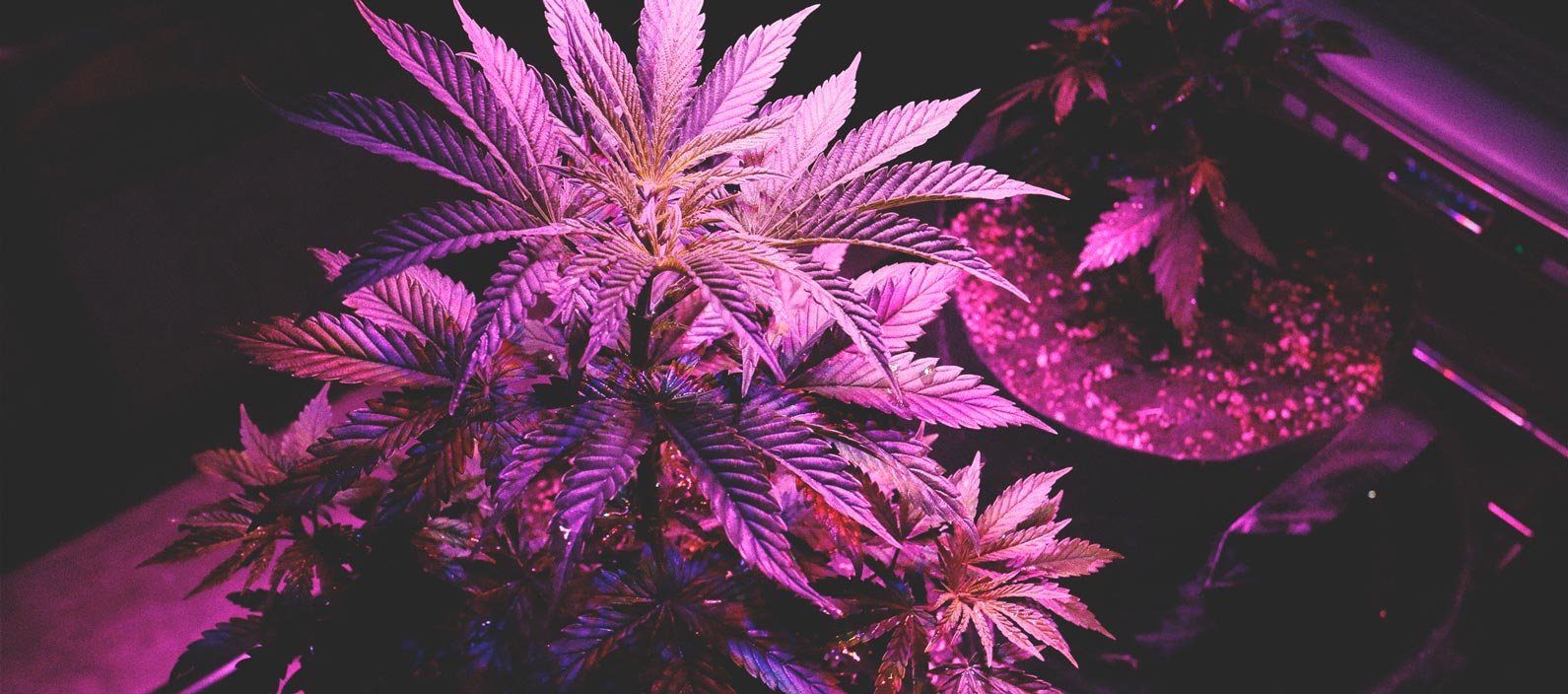
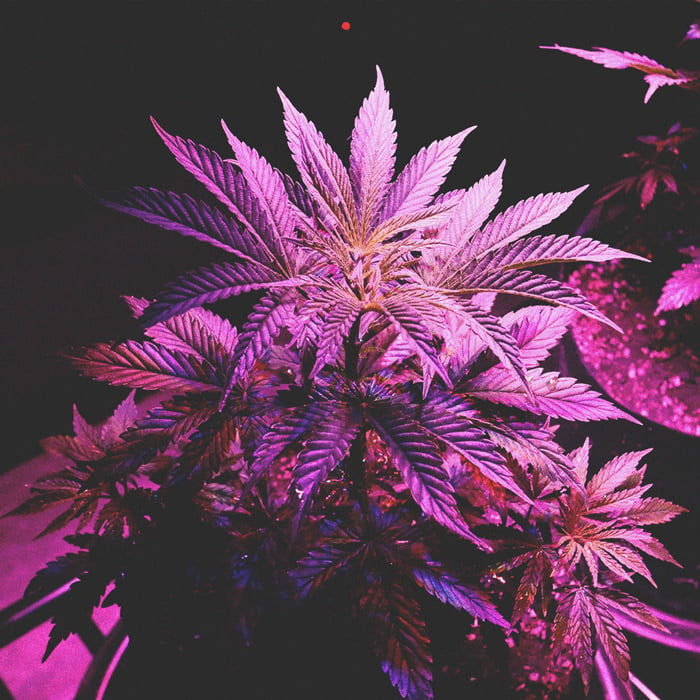
2. Overwatering Your Cannabis Plant
Because good ol’ HID lights emit a lot more heat than LEDs, soil normally dries out quicker when utilising the former. Once growers make the switch, however, they often forget to take this into account. Given the significant reduction in heat, it’s likely your plants will need less frequent watering. So adjust your schedule accordingly when using LEDs, especially if you’re new to it. Overwatering is a common and sometimes serious error beginners make that paves the way for a host of pests and diseases to take hold. So this is really important to keep an eye out for. When in doubt, let your soil dry out—then you can water again.
3. Choosing the Wrong Type of LED Light
Most LED grow lights you can find today are “full spectrum” lights, which is sort of a buzzword that means you can use them for vegging and flowering. But there are also models outfitted with a switch that allows you to change the light spectrum according to the phase. Moreover, some LEDs are made only for veg—emitting a bluish light that supports fast and vigorous growth—while others are made for bloom, giving off a reddish light to support bud development. So, before you get an LED light, make sure it’s the right type. For most growers, a full spectrum LED is likely what you'll want.
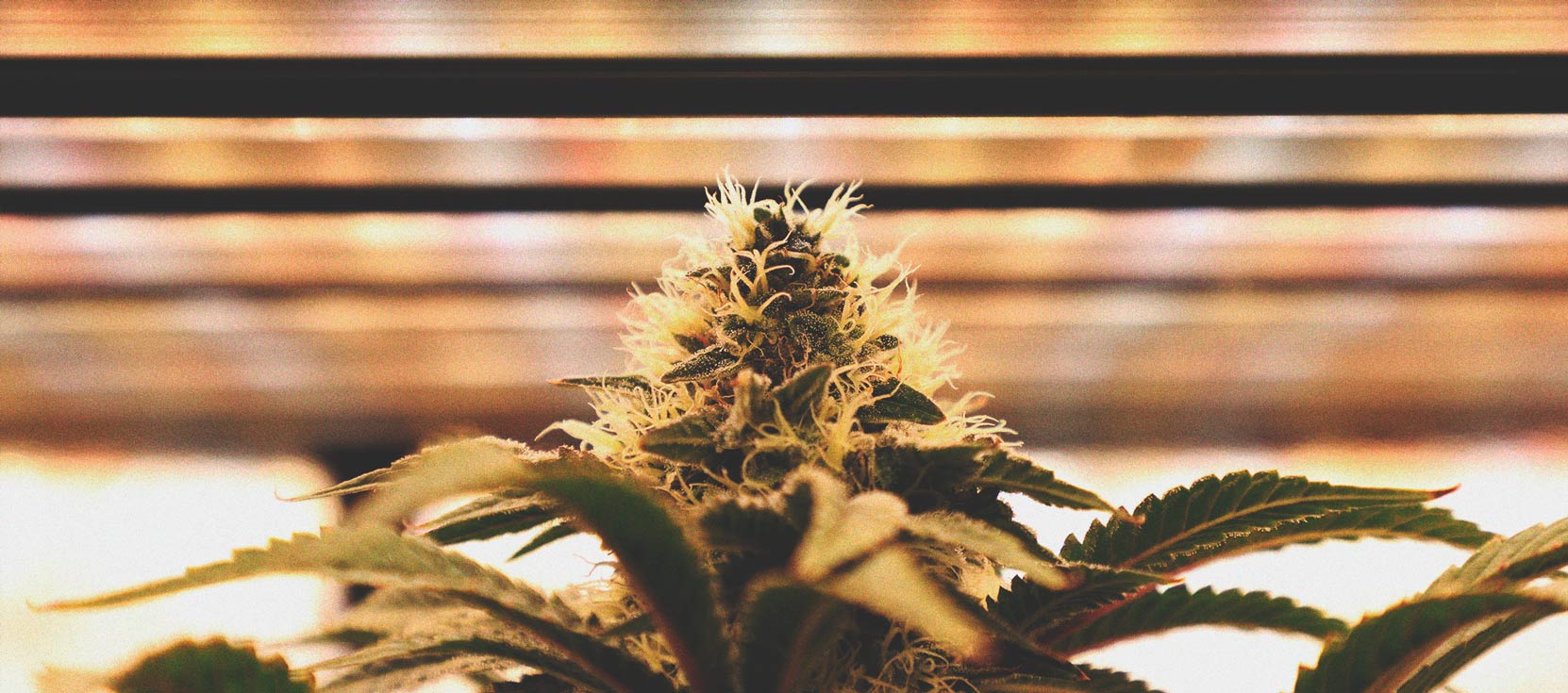
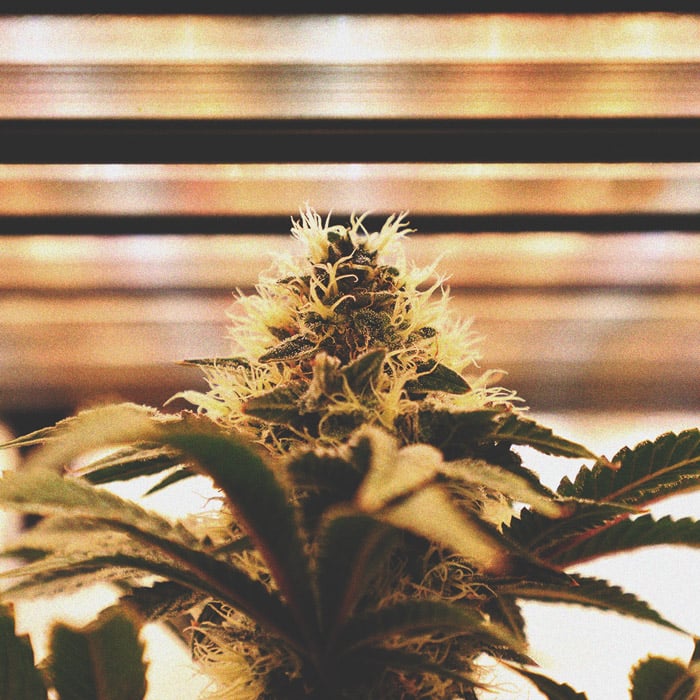
4. Choosing Low-quality LED Lights
If there’s one drawback to LED lights in comparison to HID, it’s that a quality LED is significantly more expensive outright. Not everyone has the cash upfront for a high-quality, full spectrum LED, so they look for ways to save money while still benefitting from the technology. The problem is, there are now tons of low-quality LEDs available on the internet to satisfy this very issue—and these manufacturers are not prioritising quality. These cheap LED lights are often manufactured overseas, and claim to provide more light than they’re actually capable of. Some of these lights are only able to grow one plant (if you’re lucky), and not much more. Low-quality LEDs can also be dangerous to operate if they’re made in a country that has less strict requirements on electrical safety.
Lastly, if you get a cheap LED from overseas and you run into trouble, you will likely have a hard time with warranties and returns. As almost nothing is as important as your lights when growing cannabis indoors, it’s simply not smart to cut corners here. By spending a bit more on a quality LED, you and your plants will be so much happier. Plus, high-quality LEDs are much less expensive to run than HIDs, so you’ll surely save some serious cash on your energy bill over time!
Mars Hydro FC4800 – 480W LED Grow Light
|
|
660-665nm, 2800-3000K, 4800-5000K |
|
|
84x84x8 cm |
|
|
480W±5% |
|
|
2.85μmol/j |
|
|
1368μmol/S |
|
|
Samsung LM301H EVO |
|
|
120x120 cm |
|
|
3.5g/watt |
Buy Mars Hydro FC4800 – 480W LED Grow Light
5. Not Providing Your Cannabis Plants With Enough Light
The issue with many of those cheap “beginner LEDs” is that some manufacturers intentionally confuse the grower with specs and numbers, such as wattage. This seems fine, except that, with LED lights, wattage doesn’t really say how much light the LED is emitting; it says how much energy is required to produce the light. Instead, we’re measuring in micromols/m² — Photon Flux Density (PFD) the quantity of photons that hit an area (m²) of our crop in the time of one second. So, regardless of how high the wattage is, the light could still have a poor spread and/or doesn’t penetrate the canopy well. In other words, don’t autumn victim to misleading information, and consider the source of your product.
Providing your plants with enough light can become an issue if you want to grow more than one. For example, one single 300W LED light fixture may be fine for one or maybe two plants, but it may not be enough to cover a bigger space with multiple plants. So make sure to reference any recommendations from the vendor and/or LED manufacturer on how much light you will need for your growing space. You can also look for reviews and user reports on grow forums if you want to know more about using a particular LED.
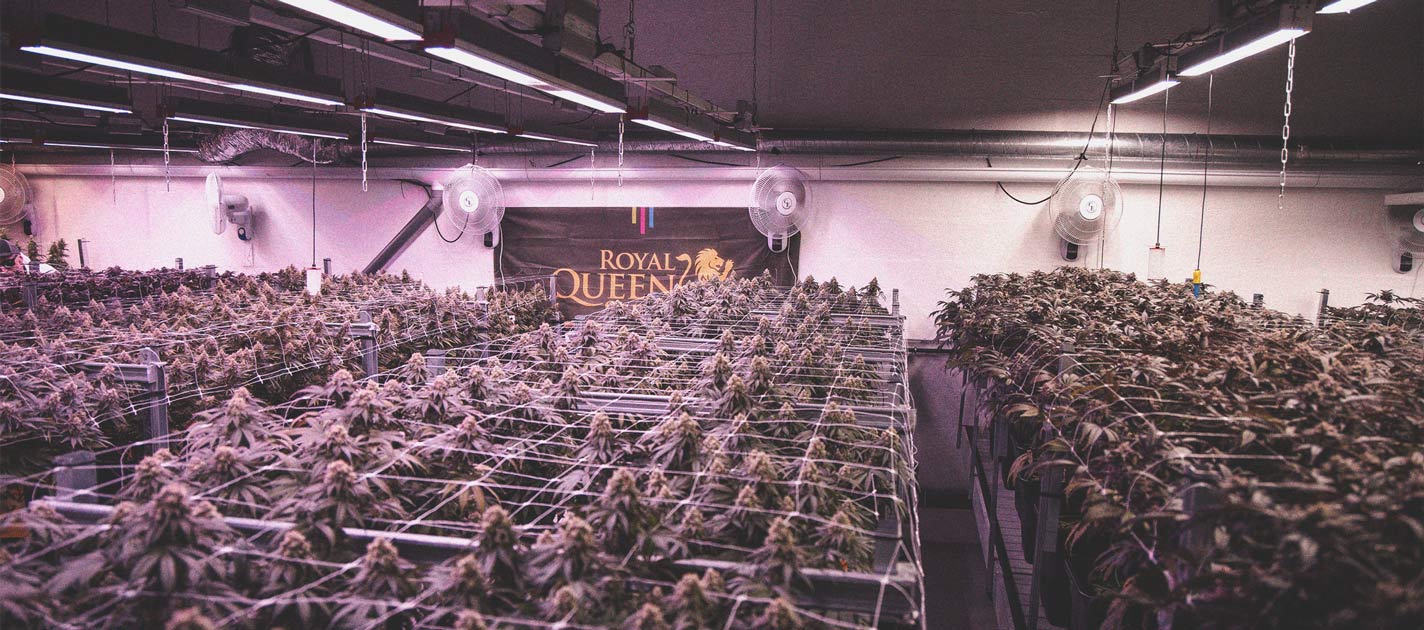
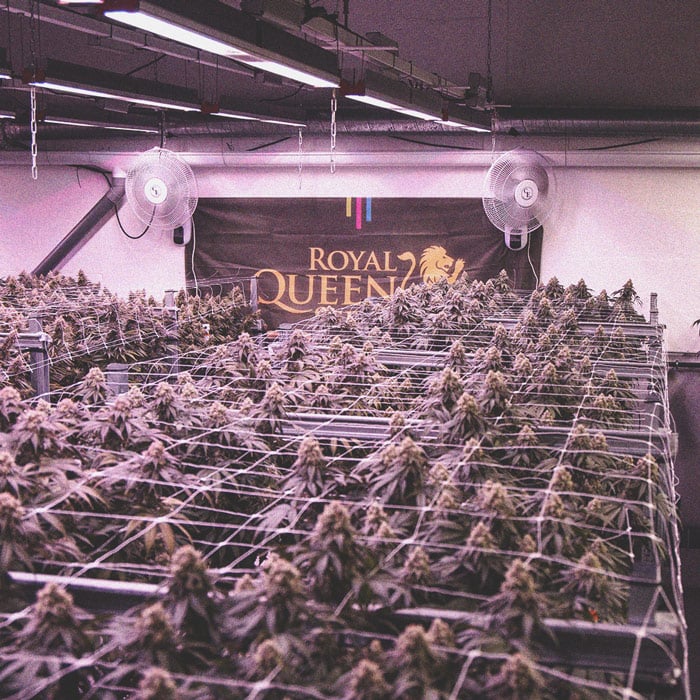
6. Providing an Improper Light Schedule
At most high-quality seed shops, you can get autoflower cannabis seeds and feminised photoperiod cannabis seeds. Autoflowering strains are relatively easy to grow, especially when it comes to lighting: You can just keep them under an 18–24-hour daily light schedule from the moment you plant your seeds up until harvest. They flower automatically after a few weeks of growth, which makes them very convenient.
Feminised (photoperiod) strains, on the other hand, are typically grown under 18–24 hours of light in the vegetative stage, then under 12 hours of light and 12 hours of darkness to initiate and sustain flowering. This shouldn’t be a problem, as most growers will set their lights on a timer for this very purpose. Then again, for someone who’s just starting out, they might not feel confident tailoring different light cycles and spectrums, especially if their setup doesn’t utilise full spectrum lights. It’s certainly not impossible for beginner growers to swiftly get the hang of maintaining proper light schedules, but sometimes the new tech of LEDs can lead people to make silly mistakes. In that case, you may wonder why your plant is reaching gigantic heights, but won’t grow you any buds!
Give LED Lights a Shot—just Be Vigilant
For more tips on growing with LEDs, check out our blog on how to make the most of your LEDs. Lastly, keep in mind that even the most advanced LED system doesn’t just magically grow good weed. So always be sure to provide your plants with the necessary water, nutrients, substrate, and all the other great things it needs. With patience, care, and some powerful LEDs, your plants will reward you with fat, resinous buds come harvest!


























